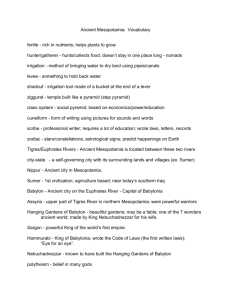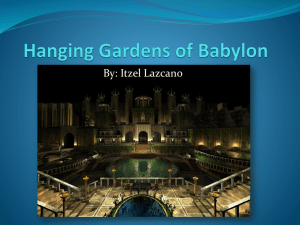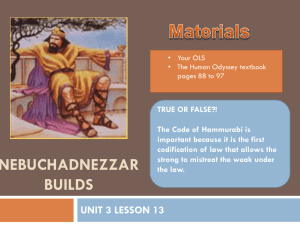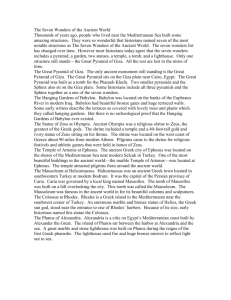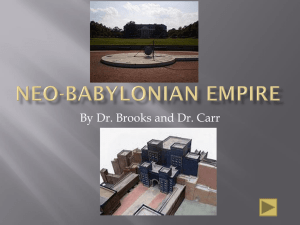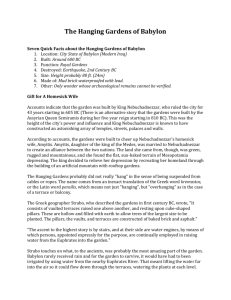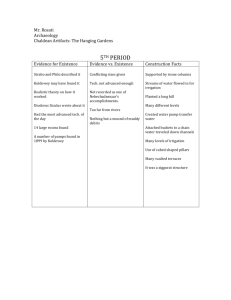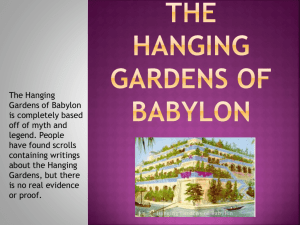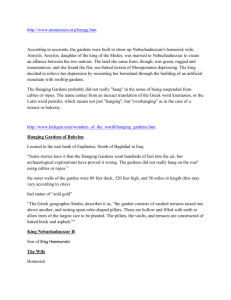PO3 P-Assess Data
advertisement
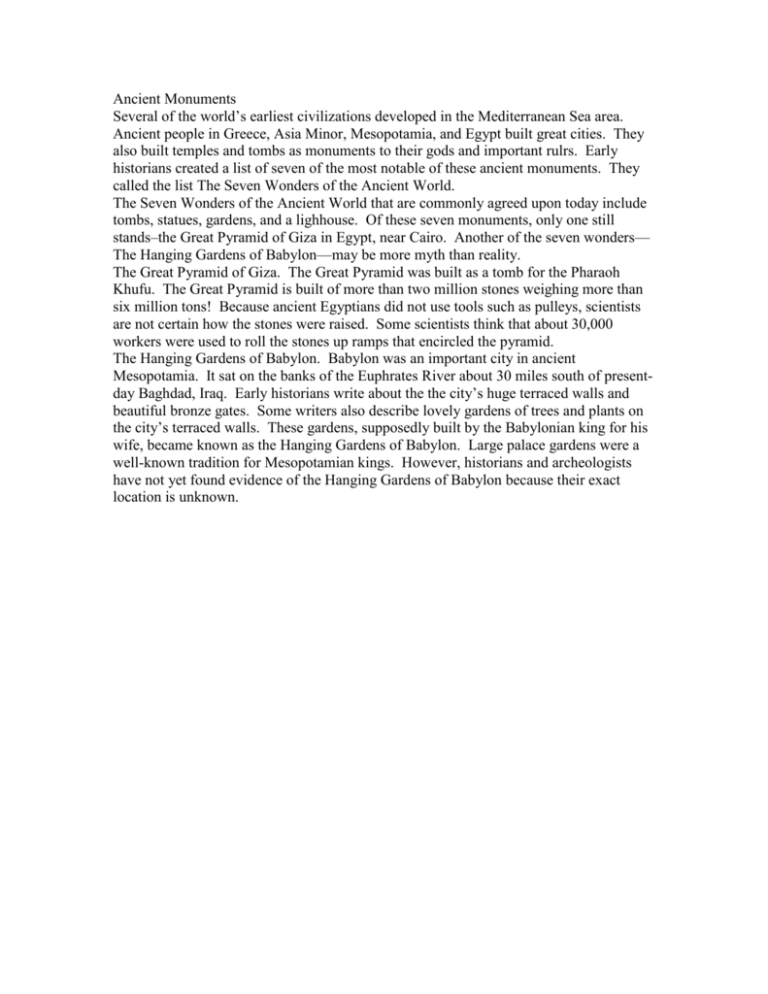
Ancient Monuments Several of the world’s earliest civilizations developed in the Mediterranean Sea area. Ancient people in Greece, Asia Minor, Mesopotamia, and Egypt built great cities. They also built temples and tombs as monuments to their gods and important rulrs. Early historians created a list of seven of the most notable of these ancient monuments. They called the list The Seven Wonders of the Ancient World. The Seven Wonders of the Ancient World that are commonly agreed upon today include tombs, statues, gardens, and a lighhouse. Of these seven monuments, only one still stands–the Great Pyramid of Giza in Egypt, near Cairo. Another of the seven wonders— The Hanging Gardens of Babylon—may be more myth than reality. The Great Pyramid of Giza. The Great Pyramid was built as a tomb for the Pharaoh Khufu. The Great Pyramid is built of more than two million stones weighing more than six million tons! Because ancient Egyptians did not use tools such as pulleys, scientists are not certain how the stones were raised. Some scientists think that about 30,000 workers were used to roll the stones up ramps that encircled the pyramid. The Hanging Gardens of Babylon. Babylon was an important city in ancient Mesopotamia. It sat on the banks of the Euphrates River about 30 miles south of presentday Baghdad, Iraq. Early historians write about the the city’s huge terraced walls and beautiful bronze gates. Some writers also describe lovely gardens of trees and plants on the city’s terraced walls. These gardens, supposedly built by the Babylonian king for his wife, became known as the Hanging Gardens of Babylon. Large palace gardens were a well-known tradition for Mesopotamian kings. However, historians and archeologists have not yet found evidence of the Hanging Gardens of Babylon because their exact location is unknown.
